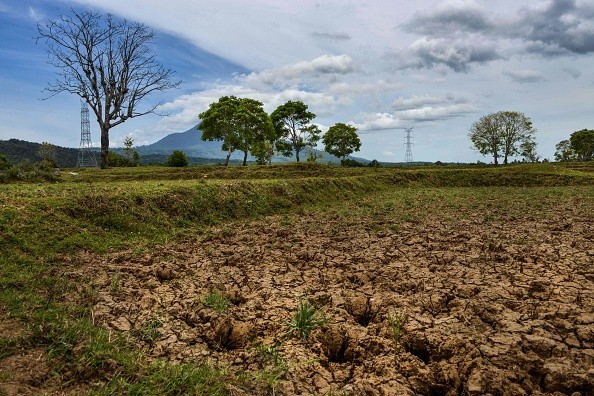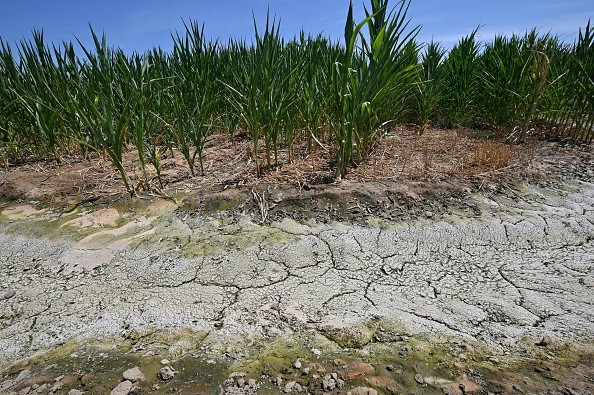According to a new study published in Nature Climate Change, droughts occurring simultaneously in different parts of the world might put unprecedented pressure on the global agricultural system. The event may likely threaten the water security of millions of people as well.

How Drought Affects Global Food Availability
Co-occurring droughts will have a significant impact on the global food network, vulnerable communities, and society as a whole in the future, researchers say. They plan to investigate these issues in greater detail in future studies.
Droughts are more likely to occur in tandem in the mid-to late-twentieth-century if the world continues to rely on fossil fuels, according to a team of researchers led by Washington State University, who looked at data on climate, agriculture, and population growth.
If humans don't take action to reduce the world's carbon footprint, agriculture and human populations will be exposed to severe droughts nine times more often.
Jitendra Singh, the study's lead author and a former postdoctoral researcher from WSU's School of the Environment who is now working at ETH Zurich in Switzerland, estimates that 120 million people will be affected by severe compound droughts each year by the end of the century.
Droughts can cause problems in many locations where analysis predicts they will be most prevalent, as per Phys.org.
In addition to a warming climate, Singh and colleagues found that the frequency of El Niño and La Niña Words events, the two opposite phases of the El Nio Southern Oscillation, is expected to rise by 22%.
More than half of the upcoming severe droughts will be linked to times of climate variation in the ocean, which have been linked to some of the most devastating environmental disasters in human history, according to researchers' forecasts.
According to Science Daily, famines killed more than 50 million people occurred in Asia, Brazil, and Africa at the same time in 1876-1878 because to El Nino-driven dryness.
Crop failures in multiple breadbasket regions have the potential to affect global food availability, even though today's technology and other circumstances are vastly different from those of the late 19th century, said study coauthor Deepti Singh, an assistant professor in the WSU School of the Environment.
As a result, food prices could become more volatile and food insecurity could increase, especially in these locations that are already sensitive to environmental shocks such as droughts.
Places Prone to Drought
These ten regions of the planet have high monthly variability in summer precipitation, they are affected by ENSO variations (which can lead to drought), and they receive the majority of their rainfall from June to September.
The researchers' analysis specifically focused on these ten regions of the planet. There are several key agricultural regions and countries that are currently experiencing food and water insecurity that are included in the study areas.
According to their findings, regions in North and South America are more likely than Asia to endure compound droughts in the future because of a warmer climate.
As a result, food grown in the Americas may be more vulnerable to climate change. To give one example, the United States is a significant exporter of staple crops and is currently shipping maize to countries all over the world.
An increase in the probability of compound droughts in the future climate could lead to regional supply deficits that could then cascade into the global market and create food poverty.

Predicting Future Drought
According to coauthor Weston Anderson, an assistant research scientist at the Earth System Science Interdisciplinary Center at the University of Maryland, even if severe droughts don't affect main food producing countries, the possibility for a food security catastrophe increases.
As a result, the provision of humanitarian aid to a higher number of individuals simultaneously could intensify demands on international bodies responsible for disaster relief.
According to Anderson, there's some good news. Research is predicated on scenarios with high levels of emissions from fossil fuels, but the international community has made strides in recent years toward reducing carbon emissions, which would significantly reduce the frequency and intensity of concurrent droughts by the end of this century.
Almost 75 percent of compound droughts in the future climate can be predicted with a lead period of up to nine months because of the occurrence of ENSO occurrences.
For more news, updates about droughts and similar topocs don't forget to folllow Nature World News!
© 2026 NatureWorldNews.com All rights reserved. Do not reproduce without permission.





